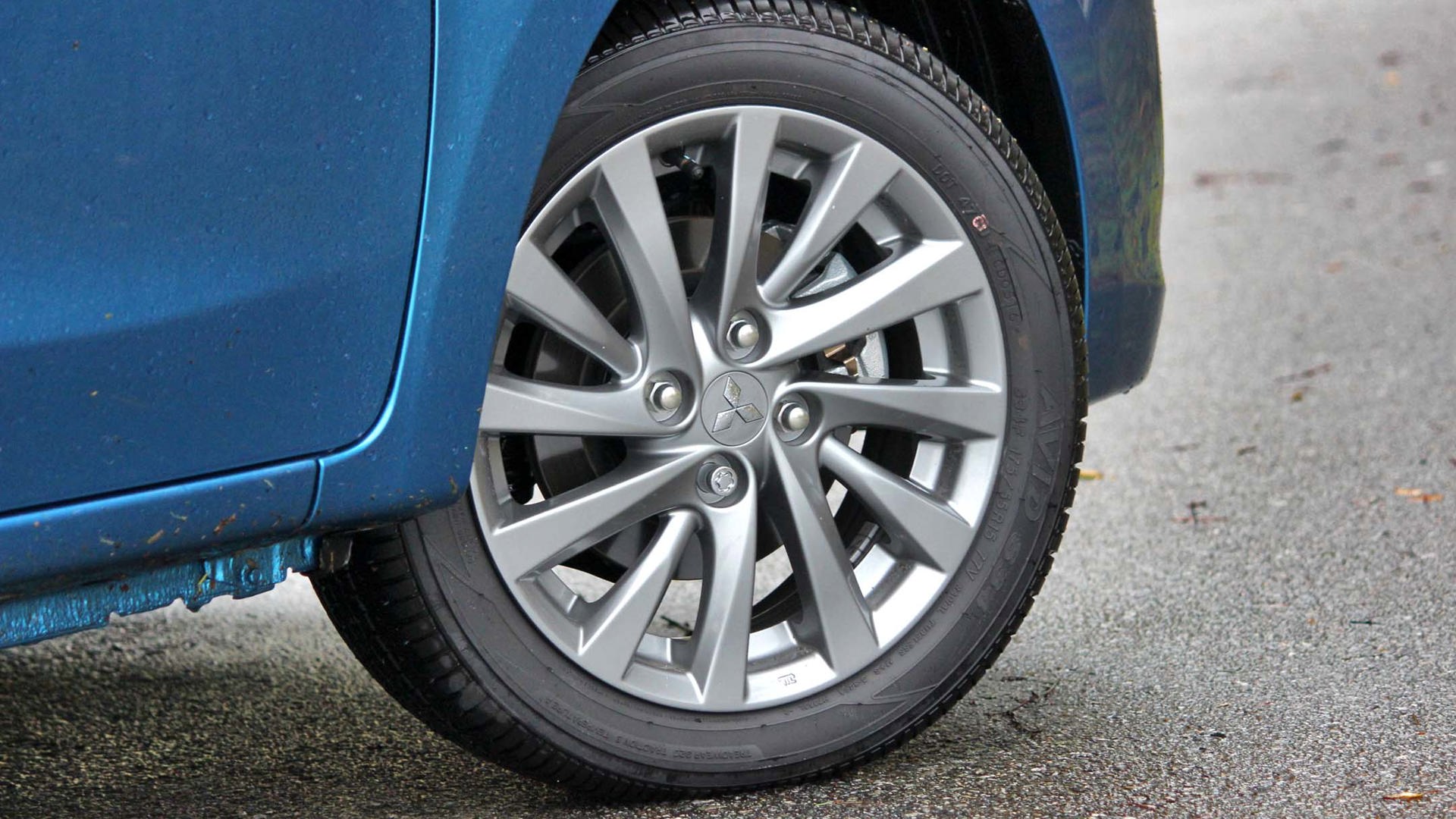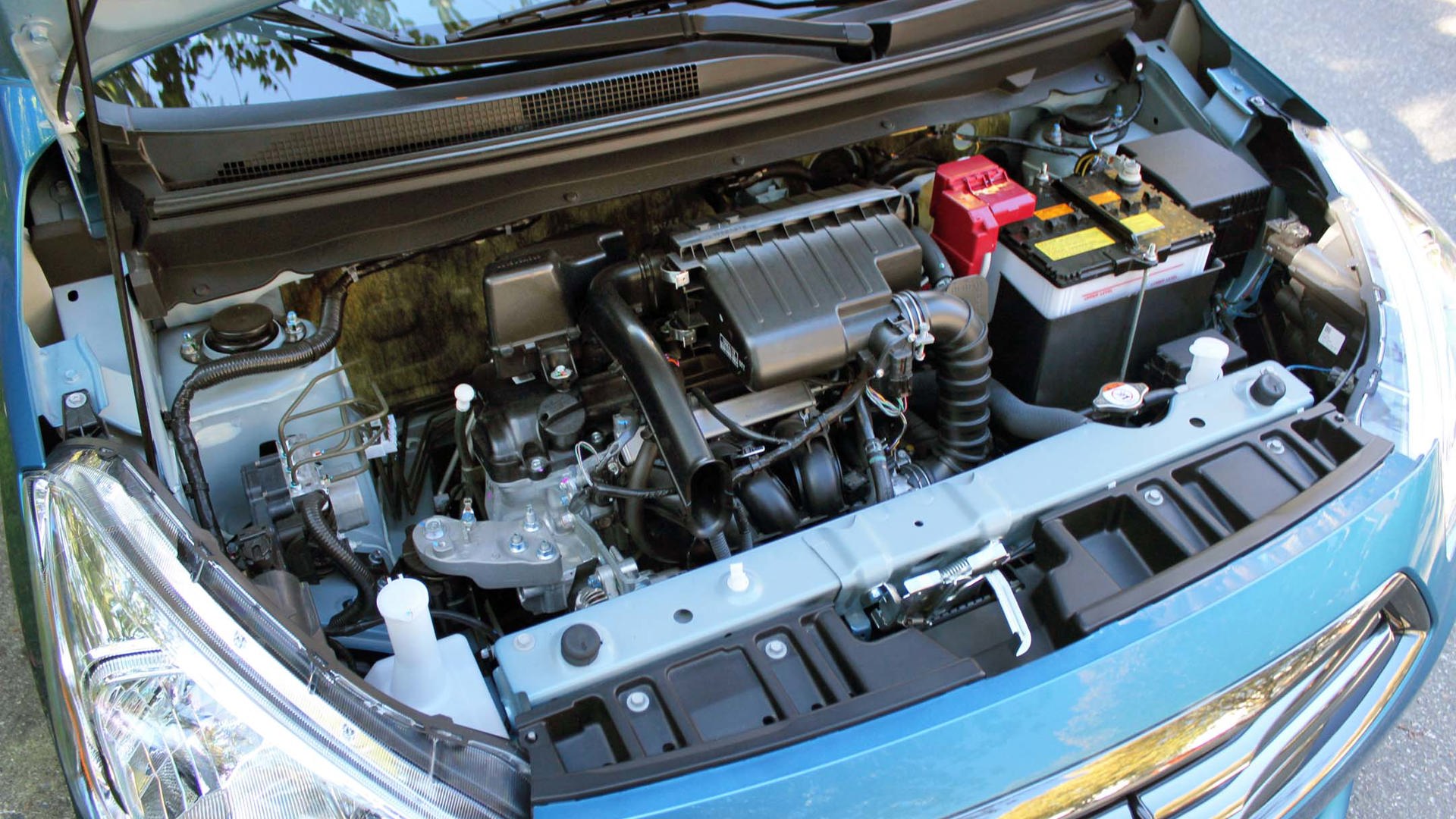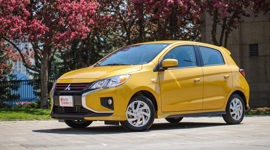 AutoTrader SCORE
AutoTrader SCORE
-
STYLING5/10
-
Safety6/10
-
PRACTICALITY6/10
-
USER-FRIENDLINESS6/10
-
FEATURES7/10
-
POWER4/10
-
COMFORT7/10
-
DRIVING FEEL7/10
-
FUEL ECONOMY9/10
-
VALUE7/10
The word on the street was Mitsubishi had had enough: the poor lil’ Mirage hatch – the car that was supposed to arrive as a beacon for those that really wanted a new car but simply couldn’t afford one – was getting panned by critics so badly that the somewhat beleaguered Japanese brand didn’t even want journalists testing the car anymore. So they pulled them from press fleets in an effort to stop the bleeding.
A few tweaks, I thought, would do [the Mirage] a whole lot of good.
I supposed they had cause for concern: the Mirage was getting outsold five-to-one by the likes of the Hyundai Accent and only the Mazda2 was selling less in the segment; even the somewhat more specialized Fiat 500 ended higher up the sales chart after 2014 than the Mirage.
I guess you could say all that bad press could be partly to blame, but I think a bigger part of the problem was that the more powerful Nissan Micra arrived at around the same time, and could be had for less money at base. It didn’t matter that simply adding an automatic transmission to your Micra quickly put it ahead of the Mirage on the MSRP front; the Micra nameplate had a cachet among buyers that remembered it as their first car back in the late ’80s, which was when we’d last seen one in our market. The Mirage… didn’t.
Luckily for me (or not, depending), I’d had the chance to try the Mirage hatch before the keys had all been taken away (incinerated, perhaps) by Mitsubishi. Granted, it was only for a short time at the Canadian Car of the Year Competition, but it was enough to see what the problems were. It was gutless, the back seat was flat as a board and seemed like a metal frame with fabric stretched over it, and cheap materials met your eye at every turn. It wasn’t great, but at the same time, its price and its somewhat nimble handling was enough to have me thinking, “Well, if you really, absolutely had to have a new car, then this could work.” A few tweaks, I thought, would do it a whole lot of good.
The Knee Test
Of course, the first thing you’ll notice is that with the “G4” badging comes a sedan body style; the hatch is still available, and it actually starts at $1,800 less than the sedan, which starts at $14,498 with a manual transmission.
For the purposes of this particular test, however, I would say the sedan is worth the extra scratch, as there’s more legroom in the back, and pretty much the same headroom. In fact, there’s even more legroom than there is in the larger Lancer.
The high-ish roof also makes stepping into the G4 rather easy, although the dreaded shifter-in-the-thigh issue is present here as no matter how much I tried to tweak the seat – this is the SEL trim, so it’s adjustable six ways – I was going to have to hold my right leg in position, leading to fatigue over longer drives. The seats themselves actually aren’t that bad: the bottom cushion could be a little bigger, but I’ve experienced worse seats in this segment. They’re even heated to two levels, and they build up their heat in quick fashion.
The lack of any form of armrest either on the centre console or attached to the side of the seatback is a little harder to forgive, however. You’re pretty much forced to rest your arm either on the passenger seat or gear lever, neither of which is recommended when it comes to properly – and safely – sitting behind the wheel.
The back seats are a big step up on the benches found in the old Mirage we talked about earlier; the items in the G4 actually have some proper cushioning and even a modicum of side bolster support. Sure, it doesn’t take much to go up from zero, but these are pretty good.
The Hockey Bag Test
If you’re going to be doing any form of hauling with your Mirage, however, the hatch has to be the way to go. The G4’s trunk opening isn’t bad, but that’s kind of where it ends. The wheel wells are intrusive, and the rear seatbacks don’t flip down, so while you could theoretically jam a hockey bag in there, the sticks are going to be a bit of a problem. You can’t really have one without the other, right?
The Rest
Styling-wise, Mitsubishi has managed to craft a somewhat better-looking car than they had previously. The older hatch – even when painted pink, as a surprising number of these were – was just so very bland to look at. Not offensive, just without any real detail that would draw your eye and make you remember it.
The new car suffers a little from this – there’s definitely a little Toyota Yaris in the front fascia, thanks mainly to the headlight lenses – but at least Mitsubishi has provided a little stylistic substance with some side creases, faux-aluminum foglight surrounds (standard on the SEL) and 15-inch alloys (again, SEL) with a spiraling spoke design. Hard to ignore those super-skinny tires, though: they really look lost in the sea of pressed steel that is the rear fender.
As I sat and considered the Mirage’s styling a little more, the main thought that crossed my mind was that there was a bit of a missed opportunity here. For a car like this, aimed at younger, trendier buyers, I just wonder if Mitsubishi shouldn’t have gone to their Ralliart parts bin and gussy the G4 up a bit: an optional larger spoiler perhaps; maybe some blacked-out wheels or chrome-tipped exhaust. What about – crazy as it sounds – a red colour with some classic Mitsu pinstriping? In reality, of course, they’re probably just not going to do the sales volume required to justify all this, but you have to think that if they could offer a pink colour for the hatch way back when, they could have taken a few steps in that direction.
Inside, while you’re unlikely to be blown away by stylistic flourishes, Mitsubishi has provided a piano black finish to the centre stack, shifter surround and even steering wheel inserts. Said wheel also gets a fairly chunky rim with thumb grips and wheel-mounted infotainment controls. I have to tell you: it’s not bad, though the fact that it tilts but doesn’t telescope is a problem for taller drivers who have to sit farther back from the wheel. The gauge cluster isn’t bad in that it’s clear and the gauges are chrome-bezelled, but the trip computer screen does little to hide the fact that the Mirage is a cheap car.
The infotainment system and its 6.5-inch touchscreen display, on the other hand, isn’t cheap at all. It’s made its way down to the Mirage from the Outlander crossover, and it’s manifested in a fairly responsive touchscreen with colourful graphics and easy-to-read buttons. It’s also compatible with both Apple CarPlay and Android Auto, and while I wouldn’t call the sound through the measly four speaker count “concert quality” by any means, that’s something that pesky Micra can’t lay claim to. It’s too bad you have to mine your way through the glovebox in order to access the USB port required for phone connectivity, though.
Let’s hit the road
So, it looks a little better, there’s more room inside and the available tech really isn’t all that bad, assuming you’re willing to pay for it. Which we’ll come back to later on.
That’s all good stuff.
The trouble begins that even though the Mirage has been on hiatus for a year – there was no 2016 model – it’s still asking prospective buyers to make do with the same flimsy three-cylinder naturally aspirated 1.2L engine. At least it has seen a whopping 4 hp power increase for 2017, from a whopping 74 hp to an even more whopping 78 hp. Whoo-whee. Torque is rated at 74 lb-ft, but you have to crank the thing to 4,000 rpm. in order to get the most out of it. You’ll have a hard time achieving the 6.4 L/100 km combined fuel economy rating at that rate, let me tell you (as it happens, we saw 6.9 L per).
The missed opportunities seem to be building up: would it have been too much to ask for Mitsubishi to find a way to shoehorn in the four-banger – or at least a version thereof – from the Lancer? Yes, they wouldn’t be able to claim those fuel economy figures which I guess are important at this level, but it would make all the difference in the world. What about finding a way to bolt on a turbocharger, as Ford does with the Fiesta, or Mini with the latest Cooper? It just suggests to me that Mitsubishi wasn’t really that serious about making a big impact here with this car, at least where the powertrain is concerned. That, or they knew they weren’t going to have the budget to do it, and they hoped that the rest of the Mirage package – cost of entry, interior tech, handling, great warranty (10-year/160,000 km powertrain, 5-year/100,000 km bumper-to-bumper) – would be enough to sway buyers.
Actually, now that we’ve got on to the subject of handling: it really isn’t that bad. The steering is direct, responsive without being too nervous and even has a bit of feel. At 9.2 m (30.2 feet), the steering radius is good enough to make tight, in-town manoeuvres easy to carry out, and is helped by how the tall roof makes for fairly good visibility around the car. There’s a rear view camera, too, if you want a little more assistance in this regard. Even the ride isn’t as brittle as the low cost of entry suggests, making the Mirage a workable car in an urban setting.
I would keep it off the highway, however, as that power figure is low to the point where I wasn’t always 100 percent comfortable that I’d be able to keep up with highway traffic. Freeway entrances had me gripping the wheel fairly tightly, I’ll tell you that. It doesn’t help that the SEL comes only with a CVT transmission, and we all know how these rarely lead to an athletic drive. The groaning sound made by the engine in conjunction with the transmission is hard to take, especially when you’re making such lethargic forward progress.
At least the brakes – discs up front, drums out back – are effective and provide enough pedal feel to know what’s going on underneath your feet.
So if you’re of taller ilk…
Well, you’d be just fine in the back seat or front passenger seat, that’s fairly certain. The driver’s seating position does ask that you cope with a few things, though, so be sure to pay special attention and take your time to adjust the seat if you do find yourself testing one of these.
The other problem with this particular model, actually, comes down to cost. All the trimmings and tech are nice, but come at a price – just under 20 grand after taxes and PDI – that brings it perilously close to some much more powerful, better-looking options. Sticking with a manual would help lower the cost (and add a dimension to the drive as a whole), but you’re locked out of much of that great tech we talked about earlier, as well as niceties like the alloy wheels and fog lights.
While the Mirage G4 sedan does move in the right direction toward the goalposts, it remains a very tough car to recommend amidst some of the competition and that pretty much comes down to one thing: the power. Or, more precisely, the lack of power and the feeling that Mitsu has very little intention of changing that with the Mirage. Of course, you still have that great warranty, attainable cost of entry and good fuel economy – not to mention ease-of-use around town – so there may be something here after all. That wheezy powerplant, though, is just so, so hard to forgive.
| Engine Displacement | 1.2L |
|---|---|
| Engine Cylinders | 3 |
| Peak Horsepower | 78 hp @ 6,000 rpm |
| Peak Torque | 74 lb-ft @ 4,000 rpm |
| Fuel Economy | 6.9/5.7/6.4 (L/100 km, cty/hwy/cmb) |
| Cargo Space | 348 L |
| Model Tested | 2017 Mitsubishi Mirage G4 SEL |
| Base Price | $18,298 |
| A/C Tax | $100 |
| Destination Fee | $1,200 |
| Price as Tested | $19,598 |
|
Optional Equipment
None
|
|





































